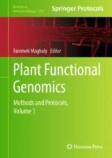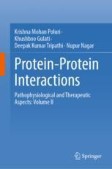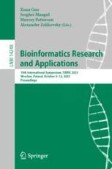Search
Search Results
-
Metagenomics analysis reveals differences in rumen microbiota in cows with low and high milk protein percentage
AbstractVariation exists in milk protein concentration of dairy cows of the same breed that are fed and managed in the same environment, and little...

-
Moderate protein intake percentage in mice for maintaining metabolic health during approach to old age
Nutritional requirements for maintaining metabolic health may vary with each life stage, such as young, middle, and old age. To investigate the...

-
A novel nondestructive detection approach for seed cotton lint percentage using deep learning
BackgroundThe lint percentage of seed cotton is one of the most important parameters for evaluating seed cotton quality and affects its price. The...

-
Genome-wide association study identifying genetic variants associated with carcass backfat thickness, lean percentage and fat percentage in a four-way crossbred pig population using SLAF-seq technology
BackgroundCarcass backfat thickness (BFT), carcass lean percentage (CLP) and carcass fat percentage (CFP) are important to the commercial pig...

-
Discovery and Characterization of Linear Motif Mediated Protein-Protein Complexes
There are myriads of protein-protein complexes that form within the cell. In addition to classical binding events between globular domains, many...
-
Protein Sorting Prediction
Many computational methods are available for predicting protein sorting in bacteria. When comparing them, it is important to know that they can be...
-
Genetic dissection of lint percentage in short-season cotton using combined QTL map** and RNA-seq
Key messageIn total, 17 QTLs for lint percentage in short-season cotton, including three stable QTLs, were detected. Twenty-eight differentially...

-
Modeling of Protein Complexes
The recent advances in structural biology, combined with continuously increasing computational capabilities and development of advanced softwares,...
-
Determining Protein Structures Using X-Ray Crystallography
X-ray crystallography is a robust and widely used technique that facilitates the three-dimensional structure determination of proteins at an atomic...
-
Investigating Plant Protein–Protein Interactions Using FRET-FLIM with a Focus on the Actin Cytoskeleton
The study of protein–protein interactions is fundamental to understanding how actin-dependent processes are controlled through the regulation of...
-
Next-Generation Yeast Two-Hybrid Screening to Discover Protein–Protein Interactions
Yeast two-hybrid is a powerful approach to discover new protein–protein interactions. Traditional methods involve screening a target protein against...
-
A Chromogenic Quantification of Protein Expression in Zebrafish Larvae
Western blot is a versatile and widely used technique in many areas of molecular biology and biotechnology for studying different protein...
-
Measuring Protein–Protein Interactions in Cells using Nanoluciferase Bioluminescence Resonance Energy Transfer (NanoBRET) Assay
Protein–protein interactions (PPIsProtein-protein interactions (PPIs)) are increasingly recognized for their roles in functional cellular networks...
-
Lint percentage and boll weight QTLs in three excellent upland cotton (Gossypium hirsutum): ZR014121, CCRI60, and EZ60
BackgroundUpland cotton ( Gossypium hirsutum L.) is the most economically important species in the cotton genus ( Gossypium spp.). Enhancing the...

-
Small-Molecule Inhibitors of Protein–Protein Interactions as Therapeutics
Protein–protein interactions (PPIs) have been sought as putative therapeutic targets for the advancement of various new treatments. This chapter...
-
xCAPT5: protein–protein interaction prediction using deep and wide multi-kernel pooling convolutional neural networks with protein language model
BackgroundPredicting protein–protein interactions (PPIs) from sequence data is a key challenge in computational biology. While various computational...

-
Protein language models can capture protein quaternary state
BackgroundDetermining a protein’s quaternary state, i.e. the number of monomers in a functional unit, is a critical step in protein...

-
A Convolutional Denoising Autoencoder for Protein Scaffold Filling
De novo protein sequencing is a valuable task in proteomics, yet it is not a fully solved problem. Many state-of-the-art approaches use top-down and...
-
Solvent-Induced Protein Precipitation for Drug Target Discovery
Traditional chemical proteomics approaches for screening drug targets usually require the immobilization/modification of the drug molecules to pull...
-
Detection of Protein–Protein Interactions Utilizing the Split-Ubiquitin Membrane-Based Yeast Two-Hybrid System
Identifying the interactors of a protein is a key step in understanding its possible cellular function(s). Among the various methods that can be used...
